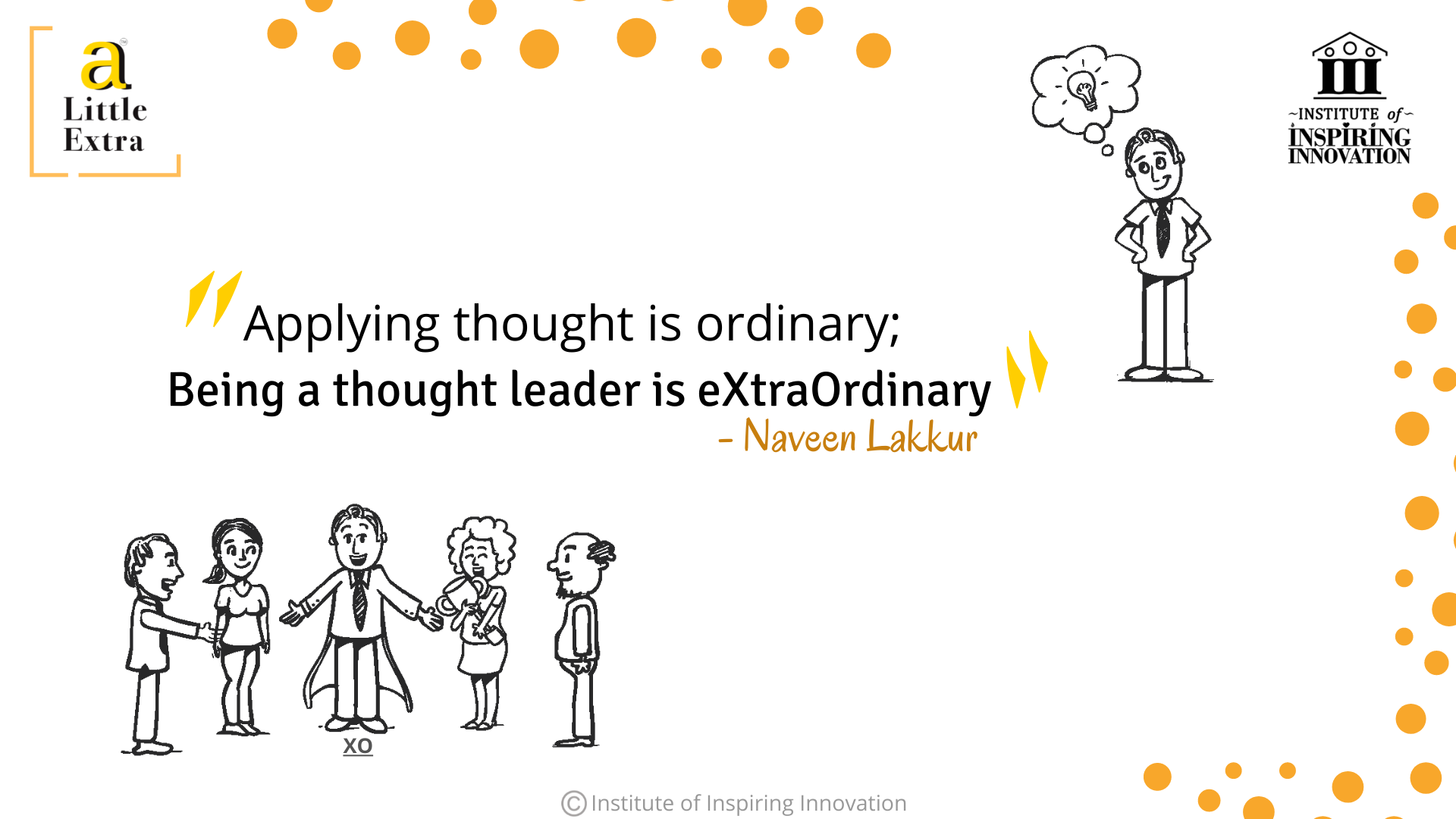Being a Thought Leader is eXtraOrdinary

“Applying thought is ordinary; Being a thought leader is eXtraOrdinary.” – Naveen Lakkur
 or
or
 Most people apply thought to a thing and turn that into something big. Only a few people apply thought on a consistent basis and accepted by their community or fraternity as a thought leader. Every word they say is taken as gospel and applied to a concept. Let us look at a few examples of people who became thought leaders.
Most people apply thought to a thing and turn that into something big. Only a few people apply thought on a consistent basis and accepted by their community or fraternity as a thought leader. Every word they say is taken as gospel and applied to a concept. Let us look at a few examples of people who became thought leaders.
 or
or
 Most people apply thought to a thing and turn that into something big. Only a few people apply thought on a consistent basis and accepted by their community or fraternity as a thought leader. Every word they say is taken as gospel and applied to a concept. Let us look at a few examples of people who became thought leaders.
Most people apply thought to a thing and turn that into something big. Only a few people apply thought on a consistent basis and accepted by their community or fraternity as a thought leader. Every word they say is taken as gospel and applied to a concept. Let us look at a few examples of people who became thought leaders.

Leave a comment